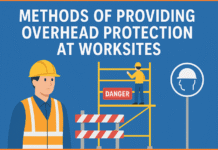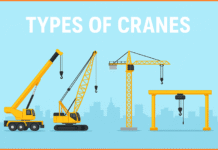Replacing the Indian Electricity Act 1910, the Electricity Act 2003 (No. 36 of 2003) came into force on 10-6-2003. It was amended in the same year with effect from 21-1-2004.
It has 18 parts, 185 sections and a Schedule. Its preamble runs as under
An Act to consolidate the laws relating t generation, transmission, distribution, trading and us of electricity and generally of taking measure conducive to development of electricity industry promoting competition therein, protecting interest o consumers and supply of electricity to all areas rationalization of electricity tariff, ensuring transparent policies regarding subsidies, promotion of efficient an environmentally benign policies, constitution of Central Electricity Authority, Regulatory Commissions an establishment of Appellate Tribunal and for matter connected therewith or incidental thereto.
Section-2 gives 77 definitions like board, captive generating plant, cogeneration, conservation, dedicate transmission lines, distribution system, electric un electricity, electricity system, generating station, grid high voltage line, line, main, overhead line, power system, service-line, street, substation, transmission lines and works etc Sections 3 to 11 are pertaining to grant of lines and its revocation, amendment, purchase etc.
Section 161 regarding Notice of Accidents Inquiries provides that (1) an accident to any person or animal resulting or likely to result in death or any injury is to be reported to the Electrical Inspector an other authorities in a prescribed time and (2) inquiry and report by the Electrical inspector into the cause accident affecting safety of the public and manner compliance of statutory requirements.
Section 162 is regarding Appointment of Electrical Inspector and Electrical Inspector.
Subjects of this Act are as under
| Part No. | Section | Subject |
| 1 | 1-2 | Preliminary |
| 2 | 3-6 | National Electricity Policy and Plan |
| 3 | 7-11 | Generation of Electricity |
| 4 | 12-24 | Licensing |
| 5 | 25-41 | Transmission of Electricity |
| 6 | 41-60 | Distribution of Electricity |
| 7 | 61-66 | Tariff |
| 8 | 67-69 | Works |
| 9 | 70-75 | Central Electricity Authority |
| 10 | 76-109 | Regulatory Commissions |
| 11 | 110-125 | Appellate Tribunal for Electricity |
| 12 | 126-130 | Investigation and Enforcement |
| 13 | 131-134 | Reorganization of Board |
| 14 | 135-152 | Offences and Penalties |
| 15 | 153-157 | Special Courts |
| 16 | 158 | Dispute Resolution |
| 17 | 159-165 | Other Provisions |
| 18 | 166-185 | Miscellaneous |
Indian Electricity Rules, 1956
U/s 37 of the Electricity Act, 1910, the Central Electricity Board, made these rules which were published and came into force from 26-6-1956.
The rules were amended in 1991, 1993, 2000, 2002. It has 11 Chapters, 143 rules and 15 Annexure. From safety point of view following two chapters are more important.
Chapter Rules Title
IV 29-46 General Safety Requirements.
X 109-132 Additional Precautions to be adopted in Mines & Oil-fields.
A short summary of the rules is given below. For full details, the statute book should be referred.
Rule 2 gives 57 definitions. ‘Danger’ is defined as danger to life or body part from shock, bum, fire, explosion, injury to persons or property because of the electrical energy.
Flameproof enclosure means an enclosure for electrical machinery or apparatus to withstand internal explosion due to flammable gas or vapor entered inside and preventing this internal Flammation to come out to the external flammable gas or vapor in which it is designed to be used.
Guarded means covered, shielded, fenced or otherwise protected by means of suitable casing, barrier, rails or metal screens to remove the possibility of dangerous contact or approach by persons or object to a point of danger.
‘Intrinsically safe’ as applied to apparatus o associated circuits shall denote that any sparking that may occur in normal working is incapable to cause explosion of inflammable gas or vapor.
Voltage category is defined as low<250V medium<650V, high<33KV, extra high> 33KV.
Rule 4 prescribes appointment and qualification for Electrical Inspectors that degree in electrical engineering with at least 8 years practical experience For assistant inspectors BE(E) + 3 years experience o DME + 6 years experience is prescribed. Rule 5 give their powers of entry and inspection.
Chapter-3, rules 11 to 28 prescribes licensing procedure including maps, forms and conditions.
Chapter-4, rules 29 to 46, give following genera safety provisions General Safety Provisions:
- Electric supply lines and apparatus, shall be Sufficient ratings, mechanical strength and constructed, installed, protected, worked and maintained to ensure safety of human being, animals and property. IS and National Electrical Code shall be followed (R29).
- Supplier and consumer, both, will take due precautions to avoid danger from service lines and apparatus on consumer’s premises (R30).
- Suitable cut-outs (e.g. fuse) in fireproof receptacles shall be provided in every service line (other than earth lines) at consumer’s premises (R.31).
- Earth and neutral conductors shall be identified to distinguish from live conductor and position of switches and cut-out shall be safe (R32).
- Earth connection (terminal) shall be provided near the point of start of supply and the consumer shall take steps to protect it from mechanical damage (R33).
- Bare conductors should be inaccessible with readily accessible switches to cut off power supply (R34). 5
- Danger notice in Hindi, English or local language with a sign of skull and bones (IS-2551) and the words ‘danger’ and ‘volts’ is necessary near medium and higher voltage installation (i. e. above 250V). (R. 35).
- For the safety from supply lines and apparatus, earthling of lines, PPE to workers (gloves, rubber shoes, safety belts, ladders, earthing devices, helmets, line testers and hand lamps, for protection from electrical and mechanical injury), and authorized working on live lines are necessary (R36).
- Voltage cut off switch (in one operation) is a must in every electric vehicle, crane, etc. and the metal rails, if any, should be electrically continuous and earthed (R37).
- Flexible cables to portable apparatus should be heavily insulated and well protected from mechanical damage. For single phase line the cable should be of 3 core and for 3 phase line, it should be of 4 core type with the distinguished ground connection. Metal covering, if any, should be earthed (R.38).
- Insulating or protecting material of electric line should not be of such material that may produce noxious or flammable gases on excessive heating (R. 39).
- Street boxes should be free from influx of water or gas. They should be inspected regularly for that (R.40).
- Different circuits should be distinguished from each other (R.41).
- Voltage should not exceed the limits and AC-DC circuits should not come into contact with each other when live (R. 42).
- Fire extinguishers for electric fire, fire buckets with clean, dry sand, first-aid boxes, two or more gas masks to be used in the event of fire or smoke are necessary (R.43).
- Notice of instructions to restore person from electric shack and an artificial respirator (resuscitation) necessary (R.44).
- Fatal accident should be reported within 24 hours and non-fatal accident, in 48 hours (RA4A).
- Electric work shall be carried out by licensed electrical contractor under direct supervision of a competent person and a person holding permit by the State Government. Unauthorized work shall not be energized (R. 45).
- Inspection of installation at every 5 years by the Inspector. Annex-IXA is an inspection report Form (R46).
Chapter-V (R. 47 to 59) gives general conditions relating to supply and use of energy Rule 51 for medium, high and extra high voltage installations should be referred Chapter-VI (R. 60 to 62) for low and medium voltages (up-to 650V) and Chapter VU (R. 63 to 73) for high and extra high voltage (more than 650V) provide for insulation resistance test, earth connection, ELCB, testing, operation and maintenance, condensers and supply to high voltage installation including X-ray unit,
Chapter-VIII (R. 74 to 93) gives important safety clearances (see Part 4. 6 of Chapter II) above ground and between conductors and provisions for material strength, stresses, joints, guarding, earthing, safety and protective devices R.91 for safety of line when it breaks, unauthorized’ entry near overhead lines) etc.
Chapter-IX (R. 94 to 108) is for electric traction, and provides for voltage supply to vehicle, insulation of lines, returns and sections, current density (less than 1-4 Amp/cm2) in rails, height of trolley-wire (more than 5.2 m high) etc.
Chapter-X (R109 to 132) is regarding safety precautions while working in mines and oil-fields. They include plans, notices, lighting, communications, the precautions, earthing, protective equipment, voltage limits (Hand lamp or electric interlocking 30V, portable apparatus 125V, at surface or in open 250V), safety with gas Supervision etc. Chapter-XI (R.l33 to 143) gives relaxation and penalty provisions:
Electricity Rules, 2005 U/s 176 of the Electricity Act, 2003 these rules were made arid they came into force from 8-6-2005. They were amended in the same year with effect from 26-10-2006.They have 13 rules. Rule 3 gives requirements of captive generating plant. Other provisions are regarding distribution system, surcharge u/s 38, consumer redressed forum, tariff u/s 79, interstate trading license etc.






Hi, thank you for sharing this blog post! There are a lot of important information from this article and I love it.
In my opinion, Try not to depend on establishing to cover a deficient circuit nor endeavor to address a flaw by inclusion of another wire or breaker, especially one of bigger limit.
Please send me BOCW act rules
http://rlsdhamal.com/wp-content/uploads/2018/08/BOCW.pdf